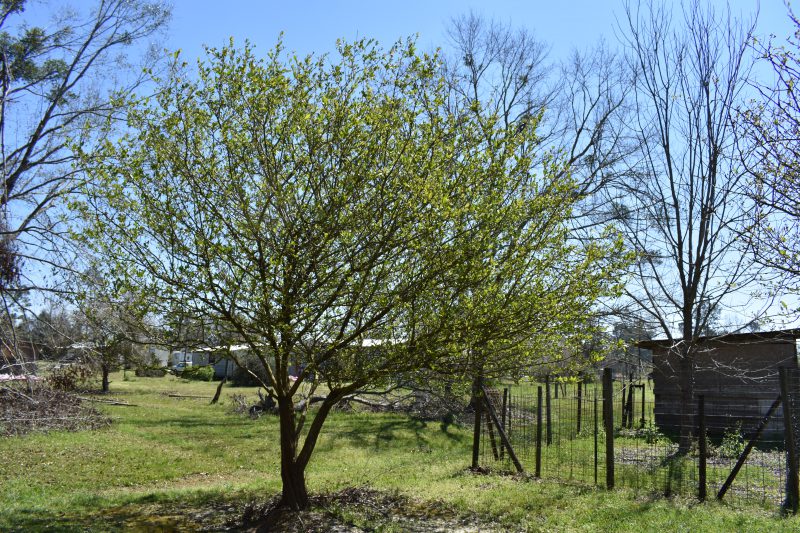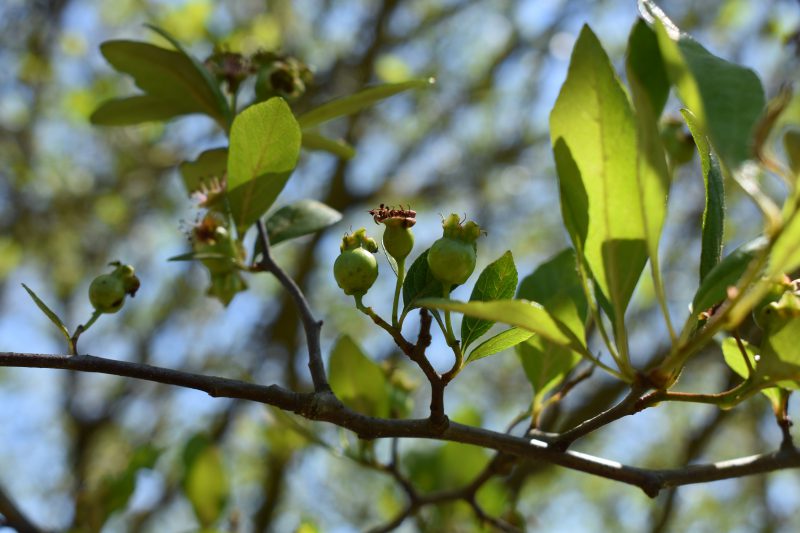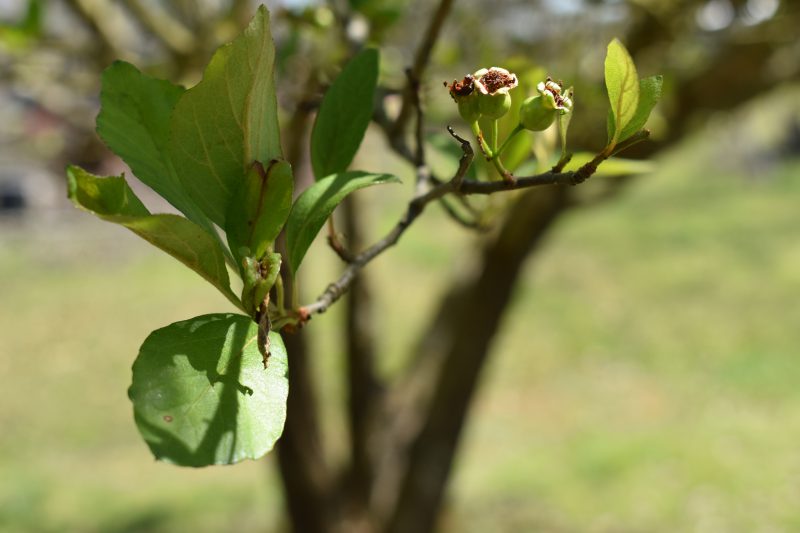The last year has been wet and stormy and the trend continues as we leave winter behind for spring. Fruit growers may be searching for a variety tolerant of excessive moisture, that will grow well in our waterlogged soils? Well, look no further than the humble mayhaw (Cratagus aestivalis, C. rufula, C. opaca), a fruit that’s been enjoyed in parts of the southern U.S. for generations, but is virtually unknown in other locales.
Mayhaw fruits have traditionally not been cultivated, but were collected in the wild. As early as the 1800s, they have been collected from boggy or swampy areas for their excellence in producing jelly. As more swamps were drained or fenced off throughout the 20th century, many traditional mayhaw collection sites either disappeared or became inaccessible. Thankfully in the 1980s, efforts were made by the University of Georgia (UGA) to collect, evaluate, and select for mayhaw cultivars that will grow on both wet and dry sites.
Due to these efforts, the mayhaw is now less obscure, but still far from a household name. Over 21 cultivars have been tested for crop production by UGA. Although in the wild they grow without human assistance, planted in a cropping situation mayhaws will need to be fertilized twice a year with 10-10-10, sprayed with dormant oil to control scale, and sprayed on an as needed basis with fungicides and insecticides similar to peach production. Further explanation on this care program is noted in Circular 966 “Experiments and Observations on Growing Mayhaws as a Crop in South Georgia and North Florida”.
One particular pest to look out for in mayhaws is cedar-quince rust, Gymnosporangium clavipes. This fungus also occurs on pear, apple and quince. Cankers form on eastern red cedar host plants, which transmit spores to the mayhaw fruits. These spores germinate on the mayhaw and render the fruit inedible. Although myclobutanyl, a fungicide that offers some cedar-quince rust control exists, is a good strategy to plant mayhaw trees as far from cedars as possible.
Unlike peach trees, mayhaws should be initially pruned at one-year-old to establish good branching structure, then left alone, except for removal of dead or diseased wood and crossing branches. This is because partially shaded fruit will have better quality. The fruit tend to scald in extreme sunlight.
Overall, mayhaws require less intensive management than peaches. Additionally, they offer growers an opportunity to join a niche market for fresh sales to private and commercial jelly makers. Growers can also make and sell their own jellies, preserves and candies under Florida’s current cottage food law. It might be time to give mayhaws a try!
For more information, use the following links:
- North Florida Fruit Enthusiasts Might Consider Mayhaws
- Experiments and Observations on Growing Mayhaws as a Crop in South Georgia and North Florida
- Quince Rust on Mayhaw
- Steps to Remedy Non-Productive Pecan Orchards - June 30, 2023
- If Not Disease, Then What? Abiotic Vegetable Disorders - June 24, 2022
- Dormant Sprays Protect Fruit Trees from Future Insects and Diseases - January 28, 2022



